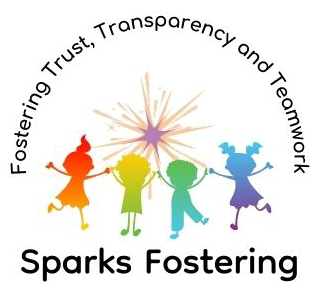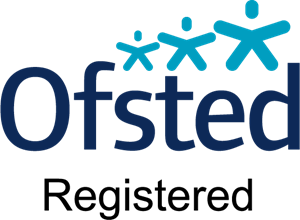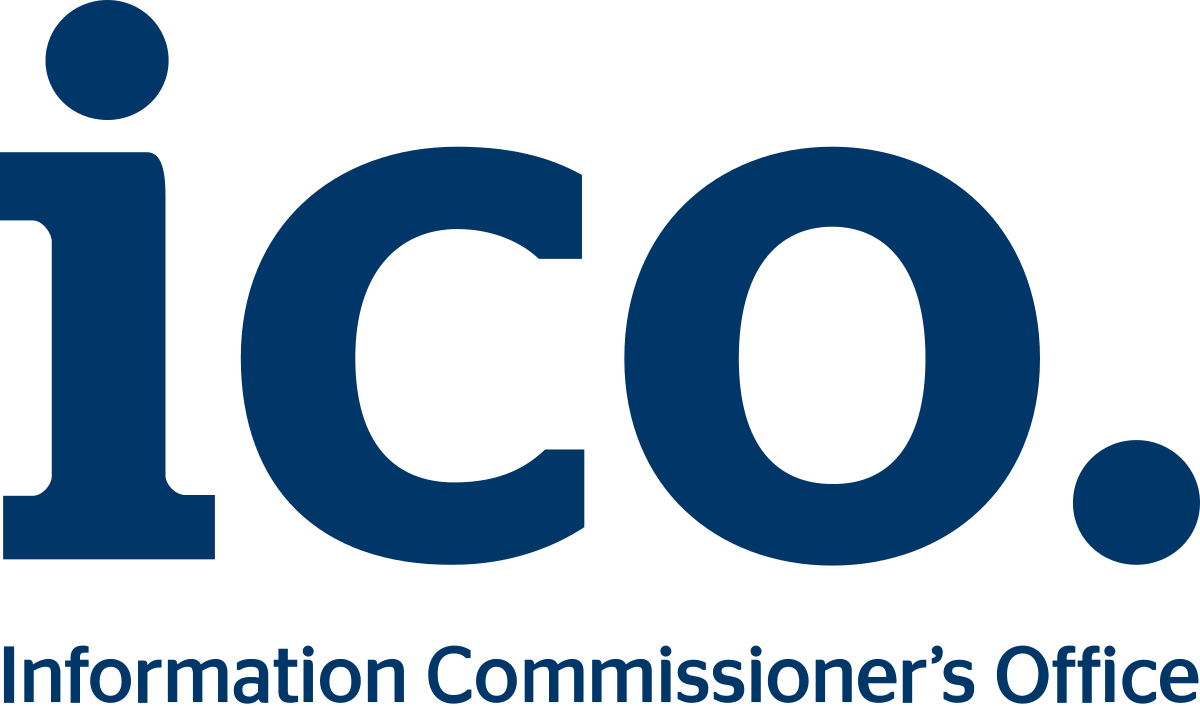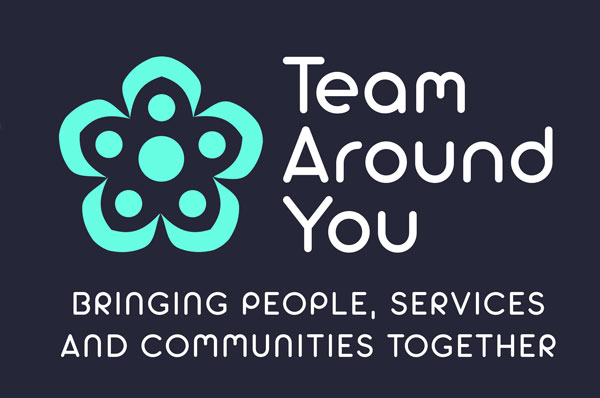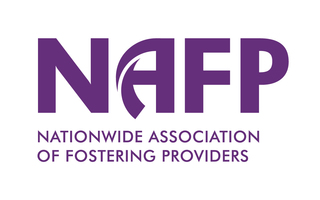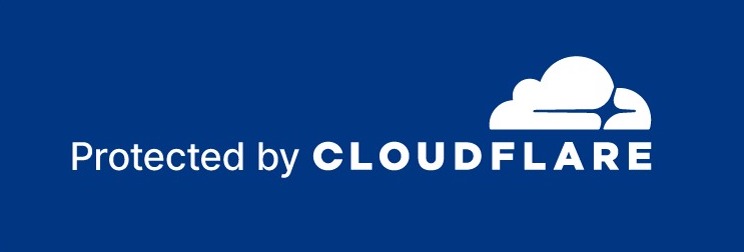Modern slavery and child exploitation
This guidance will use the term ‘victim’ to describe a person who has been exploited or abused. Some people who have experienced exploitation or abuse prefer the term ‘survivor’. The term ‘complainant’ is used in the criminal justice system when accusations have not been proven. For simplicity, the term ‘victim’ is used here. When speaking with children and writing in their records, the child’s preferred terms are used.
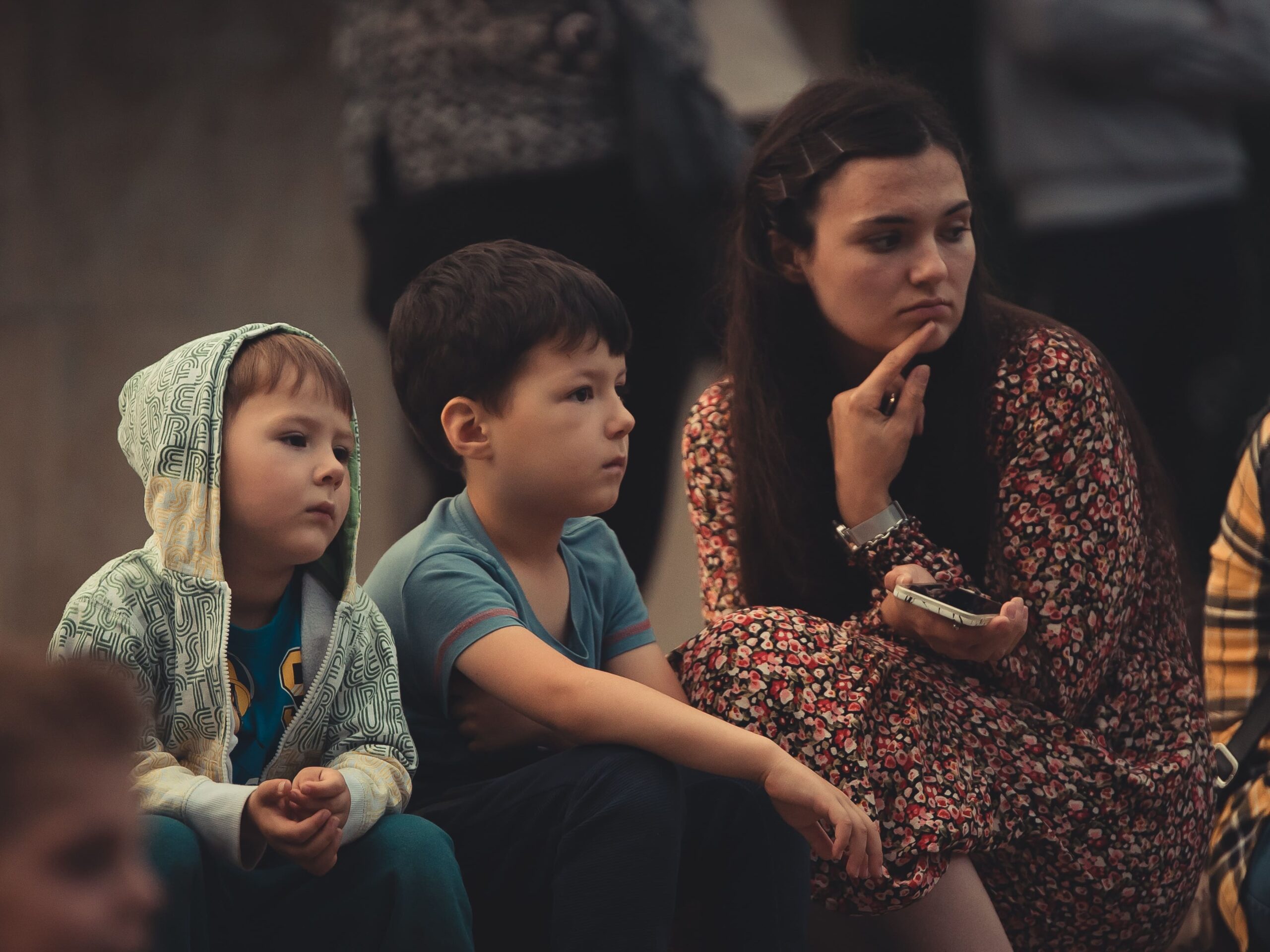
Modern Slavery
Children who are in our care are particularly vulnerable to all forms of modern slavery. Modern slavery is a crime resulting in an abhorrent abuse of human rights. It is constituted in the Modern Slavery Act 2015 by the offences of ‘slavery, servitude and forced or compulsory labour’ and ‘human trafficking’. Modern slavery can encompass many different types of exploitation and abuse. There are terms which aim to describe specific types of modern slavery, some of which may overlap, and people may experience more than one form of modern slavery.
Around two-thirds of the victims of modern slavery are adults, and one-third are children. There is a roughly equal split between females and males. The Modern Slavery Act 2015 specifically recognises that a child doesn’t need to have been forced, threatened, or deceived into their situation for it to be defined as exploitation.
Modern slavery can be categorised into 4 main types:
Labour exploitation
The definition of forced labour is ‘all work or service which is extracted from any person under the threat of penalty and for which the person has not offered himself or herself voluntarily’. Victims are forced to work and are very rarely paid.
Debt bondage is a form of forced labour and happens when a person is forced to work to pay off a debt. They are tricked into working for little or no pay, with no control over their debt. This is thought to be the most widespread form of slavery today.
Domestic servitude
Criminal exploitation
Child criminal exploitation occurs when an individual takes advantage of an imbalance of power to coerce, control, manipulate or deceive a child or young person under the age of 18 into any criminal activity:
- In exchange for something the victim needs or wants.
- For the financial or other advantage of the perpetrator or facilitator.
- Through violence or the threat of violence.
The victim may have been criminally exploited even if the activity appears consensual. Child criminal exploitation does not always involve physical contact; it can also occur through the use of technology.
Children may be involved in drug dealing, growing cannabis in the home (or cultivating other drugs), acquisitive crimes (such as shoplifting and pickpocketing), begging, or sham/forced marriages.
Sexual exploitation
Children may be sexually exploited by individuals or groups of offenders. This is usually for personal gratification, but sometimes the exploitation involves sex work in fixed or changing locations.
Age of consent
The age of consent in the UK (regardless of sexuality) is 16 years old. This means that according to the law, only those who are aged 16 or over are able to freely agree to any sexual activity. Sex or any sexual activity between an adult (over age 18) and a young person under 16 is against the law in the UK. It is also illegal to take or send a nude photo or video of anyone under 18 and it is illegal for an adult to send sexually explicit photos to a child.
If you are in a position of trust, the age of consent is raised to 18. Foster carers, teachers, doctors and care workers are in a position of trust and it would be illegal for them to have sex with anyone under age 18 if they met through their employment.
Sex between two young people under the age of 16 is often treated as a safeguarding concern (as long as there is no coercion, manipulation or force involved from either person).
In the interests of protecting young children, anyone aged under 13 is not able to legally give consent, even if proof of the consent is shown in court.
In the UK, the sentence of underage rape carries a maximum of life imprisonment. If the victim is aged 13-15, and the sex was mutually consensual, the sentence could be up to two years in prison. If the victim is under 13 years of age, the sentence could be life imprisonment.
Sexual harassment
The legal definition of sexual harassment is when someone carries out unwanted sexual behaviour towards another person that makes them feel upset, scared, offended or humiliated. It is also when someone carries out this behaviour with the intention of making someone else feel that way. This means that it can still be sexual harassment even if the other person didn’t feel upset, scared, offended or humiliated.
Victims and survivors of sexual harassment are often told that they are being ‘unreasonable’ or ‘too sensitive’, or that they ‘can’t take a joke’. But, sexual harassment is never funny and should not be happening. It can often make people feel upset, scared, humiliated or unsafe. For some, it can have a serious impact on their physical and mental health, and affect their quality of life.
Sexual harassment includes a wide range of behaviours such as:
- Sexual comments or noises; for example, catcalling or wolf-whistling.
- Sexual gestures.
- Leering, staring or suggestive looks. This can include looking someone up and down.
- Sexual ‘jokes’.
- Sexual innuendos or suggestive comments.
- Unwanted sexual advances or flirting.
- Sexual requests or asking for sexual favours.
- Sending emails or texts with sexual content; for example, unwanted ‘sexts’ or ‘dick pics’.
- Sexual posts or contact on social media.
- Intrusive questions about a person’s private or sex life.
- Someone discussing their own sex life.
- Commenting on someone’s body, appearance or what they’re wearing.
- Spreading sexual rumours.
- Standing close to someone.
- Displaying images of a sexual nature.
- Unwanted physical contact of a physical nature; for example, brushing up against someone or hugging, kissing or massaging them.
- Stalking.
- Indecent exposure.
- Taking a photo or video under person’s clothing; what is known as ‘upskirting’.
Sparks Fostering staff and foster carers are expected to report sexual harassment. Reports of sexual harassment may be indicative of other types of abuse, such as sexual abuse, exploitation and/or modern slavery.
Language used to describe Child Sexual Exploitation
Foster carers and professionals are expected to be mindful of the language used when describing the sexual harassment and exploitation of children. The language should not be derogatory and should not, in any way, imply that the child is to blame for their own suffering.
The Child Sex Offender Disclosure Scheme
The Child Sex Offender Disclosure Scheme lets those who care for young people find out if a person has a record for child sexual offences. You don’t need to be sure that a child or young person has been abused – it’s OK to report a suspicion. If there are concerns about the contact between a child and adult, the child’s social worker can request a police check.
Child Abuse In Education Settings
Sexual abuse occurs in a range of schools from state day schools to independent residential schools, and it happens to both girls and boys from a range of family backgrounds.
The majority of perpetrators in the context of schools are male teachers or other educational staff. Perpetrators often manipulate and groom children and young people, staff and parents in order to facilitate sexual abuse, and often have good reputations with staff and parents, or are seen as ‘cool’ by pupils. Some victims and survivors believe that they are in ‘relationships’ with the perpetrators, some of which extend for years after the participants leave school. These victims are often conflicted for many years into adulthood about the ‘relationship’ and recognising it as sexual abuse. Some 6 percent of victims report that they did not disclose the sexual abuse because they thought the perpetrator loved them.
Fifteen percent of participants report sexual abuse perpetrated by peers or older children, the second most frequently reported perpetrator type in the context of schools after teachers and educational staff.
Sexual abuse, physical abuse and emotional abuse perpetrated in residential schools, independent school and special schools is disproportionately high.
The proportion of males to females who suffer sexual abuse in schools is approximately the same.
Victims of sexual abuse in schools are often aware of other victims of sexual abuse within schools. In some instances, this awareness is because participants are part of a group of children whom the perpetrator sexually abuses, or because disclosures by other victims revealed the sexual abuse. Victims have talked about suspicion or rumours in schools surrounding the perpetrators, resulting in many missed opportunities for safeguarding.
In some cases, when victims were asked by parents or teachers whether they were being sexually abused, they denied the sexual abuse to protect the perpetrator or the environment the perpetrator created. This was exacerbated by the perpetrators’ manipulation of victims.
As might be expected, sexual abuse experienced in the context of schools has more impact on schooling and employment than sexual abuse in other institutional contexts. Victims of sexual abuse in schools are more likely to have a lack of trust of those in authority.
Unaccompanied minors and child trafficking
Around 6% of children in care are unaccompanied asylum-seeking children and approximately 1 in 6 trafficked and unaccompanied children in care are reported missing in the UK.
Child trafficking is defined as recruiting, moving, receiving and harbouring children for the purpose of exploitation. Child trafficking is a form of modern slavery.
Many children are trafficked into the UK from overseas, but children can also be trafficked from one part of the UK to another.
Children are trafficked for:
- Child sexual exploitation.
- Criminal activity, including: cannabis cultivation; street crime (such as pickpocketing, begging and bag theft) and cuckooing (storing drugs or illicit items in the victim’s home); moving drugs; benefit fraud; immigration fraud; selling pirated goods, such as DVDs.
- Forced marriage.
- Domestic servitude, including cleaning, childcare, cooking.
- Forced labour, including working in restaurants, nail bars, factories, agriculture.
- Illegal adoption.
- Unreported private fostering arrangements (for any exploitative purposes).
The list is not exhaustive and children who are trafficked are often exploited in more than one way.
Particular vulnerabilities for internationally trafficked children
Children who have been trafficked may exhibit the following:
- Concerns around immigration status.
- Fears of repatriation.
- Anxiety raised by yet another professional asking similar question to ones previously asked.
- Lack of understanding of the separate role of Children’s Social Care, and that it is not an extension of the police.
- Lack of understanding of why an assessment needs to be carried out.
- Previous experience of being asked questions under threat or torture, or seeing that happen to someone else.
- Past trauma – past regime/experiences can impact upon the child’s mental and physical health. This experience can make concerns from the authorities about minor injury or poor living conditions seem trivial and this mismatch may add to the fear and uncertainty.
- The journey itself as well as the previous living situation may have been the source of trauma.
- The shock of arrival – the alien culture, system and language can cause shock and uncertainty, and can affect mood, behaviour and presentation.
- The child may have also been subject to frequent changes of address or location within the UK and may be living with the fear of sudden further unexplained moves.
Foster carers and social workers are expected to be mindful of these challenges for the children looked after by us.
See policy ‘Asylum seeking children’ for more information about how to support unaccompanied asylum seeking children (sanctuary seeking children).
County Lines
County lines drug dealing describes organised crime groups (OCGs) who supply drugs to suburban areas including market and coastal towns. County lines drug dealers use dedicated mobile phones or “deal lines” to assist in the transport of drugs.
This type of drug dealing is strongly associated with the coercion of children and vulnerable people. The dealers use children and vulnerable people to move drugs, money and sometimes weapons between their hometown and the coastal and market towns they are dealing in. In 2020 the National Crime Association said exploitation in county lines drug dealing was “the most frequently identified form of coerced criminality, with children representing the vast majority of victims”. In 2021 they said that “at least 14.5%” of modern slavery referrals were related to county lines activity.
OCGs are likely to exploit children and vulnerable adults to move and store the drugs and money and they will often use coercion, intimidation, violence (including sexual violence) and weapons. Approximately 20% of people identified as being involved in county lines are children. According to the National Crime Agency the average age of children involved in county lines drug dealing is 15.8 years old. Although, there have been reports of children as young as 12 years old being identified as involved in county lines. Children mostly play a “workforce role” in county lines drug dealing. They are used to run drugs from urban areas to county and coastal towns.
Perpetrators use children and young people to maximise profits and distance themselves from the criminal act of physically dealing with drugs. Gangs use phones to receive orders and contact young people to instruct them where to deliver drugs; this may be to a local dealer or drug user, or a dealer or drug user in another country.
Girls and young women in gangs
Recent findings suggest that up to around a third of young people in gangs are girls. They are often recruited as they are believed to be less likely to attract the attention of police and fulfil several roles in the gang from administrator and organiser to girlfriend. Like boys, they are controlled and punished, often through extreme sexual threat and violence. They too can be discarded and ostracised, becoming targets for victimisation. Girls in gangs often go unrecognised with little professional understanding about the impact this can have.
The Children’s Commissioner report ‘It’s wrong but you get used to it’ identified three strategies of exploitation of girls within organised criminal groups (OCGs):
- A young woman might be sexually assaulted or have a sexual relationship with a male member of a rival OCG.
- Young women are used to allure opposing OCG members. Both strategies are designed to provoke or disrespect a male member of an opposing OCG.
- Sexual exploitation as part of an initiation ceremony known as ‘sexing-in’, which can involve multiple OCG members.
Many children, especially those estranged from their family, can be attracted by the security of an intimate relationship. So called ‘lover boys’ target these girls and young women and create the impression of romantic relationships. They are then used as ‘sexual accessories’ offered around and abused by other gang members for their gratification. Young women associated with OCGs through casual sex with one or more gang-involved young men, often from different OCGs, are called ‘links’.
The practice of multiple men/boys having sex consecutively with one young woman/girl is known as “running trains”. This usually involves high rates of unprotected sex which leads to increased risks of sexually transmitted infections and pregnancy. Some children are becoming sexually active at 10 (or younger). The average age of girls in OCGs having sex is around 13 years old.
Some girls and young women normalise the abuse and do not see themselves as being exploited. Sexual and criminal exploitation must be viewed within the wider issue of consent.
This is complicated by organised crime groups cultures of heightened objectification and disempowerment of young women, and a sense of entitlement on the part of young men. It results in a high-risk environment for young women, in which their sexual experiences are primarily determined and shaped by the agendas of others.
A girl or young woman may not understand what she is consenting to, or may be too afraid of the consequences to say no. The consequences can be long term such as the end of a relationship and the protection that comes with it, the loss of financial security or homelessness. The process of duress or coercion is seldom understood.
Vulnerability
Some children are at increased risk of all forms of abuse, including exploitation. Factors that heighten children’s vulnerability include:
- Being a child looked after (particularly those in residential care and those with interrupted care histories).
- Having prior experience of neglect, physical and/or sexual abuse.
- Lack of a safe/stable home environment, now or in the past.
- Social isolation or social difficulties.
- Economic vulnerability.
- Homelessness or insecure accommodation status.
- Connections with other people involved in gangs or crime.
- Having a physical or learning difficulty or disability.
- Having mental health or substance misuse issues.
- Having parents with mental health or substance misuse issues.
- Being excluded from mainstream education, in particular attending a Pupil Referral Unit.
Boys and girls of all ages can be victims of trafficking. Children who have been trafficked may be from the UK or another country.
Children are particularly vulnerable to trafficking if they come from an area where: There is poverty; there is or has recently been a war; education levels are low; there is discrimination or persecution; there is political conflict and economic uncertainty.
Generally human trafficking happens because of: Demand for cheap or free labour; inequalities between countries – such as different education or employment opportunities; a lack of equal opportunities, discrimination or abuse.
When speaking with a child who has been trafficked, remember that accompanying adults may not be parents or have the authority to care for the child; speak with the child directly, without the accompanying adult present (this could put the child at further risk); and if an interpreter is required, it’s good practice to avoid using an interpreter from the same area in the country of origin as the victim. This reduces any perceived link the child may make between the interpreter and known people in their country of origin. Agencies should ensure that the interpreter is professionally trained and has been screened through a DBS check. It’s also vital that the services of an interpreter are employed in the child’s first language and that care is taken to ensure that the interpreter knows the correct dialect.
Children who have been trafficked may find it difficult to tell anyone what’s happened to them. They may tell their stories with obvious errors, inconsistencies or a lack of reality. Some traffickers compose stories for victims to learn in case they are approached by the authorities.
Children may feel guilty or ashamed about the abuse they’ve suffered. They may also be too scared to speak out, frightened of:
- All adults and authorities.
- What will happen to themselves, their friends and their family.
- Judgement from their community and families.
- Being prosecuted for a crime.
- Being returned to their home country, where their situation may be even worse.
- The effects of Juju or witchcraft rituals that were performed during their experiences.
It’s important that trafficking concerns aren’t raised directly with any accompanying adults as this could put the child at further risk
Signs and indicators of trafficking or child exploitation
Children in our care who have been trafficked or are at risk of being trafficked may:
- Share openly and clearly (with a trusted person) that they have been, or are being, exploited and abused. As we have learned from the shocking details of exploitation in Rotherham and other towns and cities, the girls who were exploited, while extremely vulnerable, were often not readily seen as victims and some had been used to recruit other girls. We must take from this that we must be prepared to see children as victims, even when we don’t understand their behaviour or if we find their behaviour to be challenging. Disclosures may be withdrawn later, but this should not necessarily lead to the ending of support or further investigation.
- Have frequent missing from home and/or school episodes (see Sparks Fostering Missing Children Policy).
- Being found out-of-area.
- Bullying in or out of school.
- Significant decline in school results/performance.
- Have items of high value (such as money, clothes, phones and electronic devices) with no credible explanation for how they acquired the items.
- Hiding weapons, money, or drugs in the home.
- Own more than one mobile phone.
- Be secretive about their use of electronic devices and spend high amounts of time on devices without the oversight of the carer/s.
- Excessive receipt of texts/phone calls.
- Be suspected (or arrested/convicted) of criminal behaviour, such as shoplifting, theft, burglary or drug dealing.
- Criminal associates.
- Have contact with adults who are unknown to the children’s social worker.
- Have an older ‘boyfriend’.
- Repeat sexually-transmitted infections, pregnancy and terminations.
- Family involvement in sexual exploitation.
- Be picked up by strangers, possibly in vehicles.
- Be an unaccompanied child with no clear explanation of how they made their way to the UK.
- Be involved in criminal activities.
- Recruiting others to criminal activities.
- Have falsified documents.
- Be inconsistent in their account of their life prior to being placed into the fostering home.
- Be inconsistent and/or dishonest about their social relationships and that they do when they are outside the fostering home.
- Drug and alcohol problems.
- Disturbed sleep patterns.
- Headaches and other physical health problems with no underlying physical problems.
- Emotional and mental health problems, such as: post-traumatic stress disorder (PTSD), flashbacks, depression, defiant behaviour, sexualised behaviour, regression, fear and anxiety, poor self-esteem, self-harming behaviour or suicidal ideation, feelings of shame, sense of isolation and lack of belonging, unexplained and/or repeated illnesses and injuries, fear linked to religion or witchcraft (juju), substance misuse, pregnancy, or other destructive behaviour. If the child is suffering from post-traumatic stress disorder (PTSD) they may have difficulty recalling details or have blanks in their memory.
If a child in our care displays any of the above, Sparks Fostering staff and foster carers are expected to report the behaviour to the child’s social worker and the Sparks Fostering Safeguarding Lead. Other organisations may also need to be notified (see below).
Barriers to Engagement
There are many factors which could limit the likelihood of children or young people engaging with people or services who are supposed to help them
- Child criminal exploitation not being recognised and responded to as a safeguarding concern.
- Professionals viewing criminal exploitation as a ‘lifestyle choice’ which can make a young person feel blamed for their exploitation or reinforce a young person’s feeling of ownership of an untrue identity of autonomous drug dealer.
- Services not being consistent or persistent in their approach and closing due to ‘non engagement’.
- Young person fearful of repercussions towards themselves, friends or family if they are seen to be engaging with professionals.
- Young person may still be being controlled by exploiters and have no ability or power to exit.
- Even if the police are involved, young person still may not feel safe or protected from repercussions.
- Young person may have distrust in services such as police and social care.
- Young person may be fearful of getting in trouble with the police or be in breach of court order.
- Children who have experienced previous abuse, fractured attachments and trauma, may hold a deep mistrust of adults and services.
- Young person may be made to feel they are in ‘debt’ to perpetrators and/or reliant on the ‘exchange’ i.e. money/substances – this is often referred to as ‘debt bondage’.
- Young person withdrawn from support network due to grooming process and unable to access services.
- Structural inequalities related to race, gender, ethnicity, class, culture, education.
- Young person may have experienced multiple professionals talking about concerns with them which again could lead a young person feeling frustrated/unable to engage.
- Young person feeling embarrassed/ashamed of their experiences.
It’s important to remember that a young person might not relate to their experience as being abusive or exploitative. The young person may feel a sense of ‘loyalty’ and ‘brotherhood’ to the exploiters, they may feel emotionally fulfilled in a way they haven’t experienced from parents, carers or professionals before. The young person may feel they have gained ‘friends’ or ‘family’ and that these people care for him or her. The young person may be receiving money or rewards that they have not had access to previously or the money may be supporting their family to cover basic needs. The young person may feel a sense of ‘status’ and ‘power’ that they haven’t had before. The young person may see themselves as an autonomous drug dealer rather than a victim of exploitation at the bottom of a large, organised crime structure.
This links in with the process of how an exploiter may target and groom a young person. It also links in with barriers to engagement and why a young person may not relate to the term ‘criminal exploitation’.
All of these issues need to be taken into consideration when discussing and formulating a care plan for children in our care who may have suffered abuse, exploitation and/or modern slavery.
Overcoming some of the barriers to engagement
If a child in our care is suspected of being a victim of modern slavery, the team around the child will work together to formulate a care plan to support the child. The planning will be lead by the children’s social worker; however, the foster carer and fostering social worker will be key contributors of the child’s care plan.
The following steps should be taken when working with victims of modern slavery or other types of abuse:
- Be interested, professionally curious, listen to what the young person is saying and hear it from a safeguarding perspective.
- Don’t make judgements; especially in relation to their involvement in criminal activities. Remember they may appear to be willing participants but it is likely that their actions and choices are being controlled by perpetrators with more power than them.
- Advocate for the young person and for child protection processes to be followed: report to police, refer to Children’s Social Care and refer to the National Referral Mechanism (see section on reporting below).
- Challenge professional views which are oppressive, judgmental, or rejecting the need for a child protection response (the fostering social worker and Sparks Fostering Safeguarding Lead can support with this if required).
- Explain what is happening and why you might need to share information. Keep the young person updated on any outcomes.
- Ensure the young person is given choices; throughout their experience of being criminally exploited they will have been working with parameters of little or no choice and therefore it is important that young person is given choice back.
- As a starting point to explaining exploitation, it can be helpful to talk about the long hours a young person is expected to carry out criminal activities as being exploitative in itself and can open up further discussion about what is going on for them.
- Explore a young person’s identity and creating a safe space to explore this.
- Discussing relevant music and music videos can open up conversations around county lines, physical/sexual violence, status, power and control.
- Building a young person’s resilience; looking at strengths and future plans.
- Be creative in your approach and ask what the young person wants or needs.
Preventing criminalisation of child victims
Despite being the victims of crime themselves, many children are unjustly charged and convicted for offences they are forced to commit while being exploited. This is particularly the case for children who are exploited for cannabis cultivation and those exploited in drug trafficking. Other children are prosecuted for document-related offences or for crimes such as theft-related offences, despite being forced into the activities and not benefiting financially from the crimes themselves. At the initial point of contact, children may be seen as criminals, and indicators of trafficking are not recognised and/or acted upon, often with adverse consequences.
The Crown Prosecution Service has issued guidance on the non-prosecution of victims of trafficking in line with European legislation. It states that “if the defendant is a child victim of trafficking/slavery, the extent to which the crime alleged against the child was consequent on and integral to his/her being a victim of trafficking/slavery must be considered. In some cases the criminal offence is a manifestation of the exploitation.” Despite this and provisions in law to counter criminalisation, convictions still take place and young people continue to suffer.
Criminalising children affects their future outcomes and so it must be avoided as far as possible. Foster carers work closely with the fostering social worker and children’s social workers to provide appropriate support to the children in our care, and to avoid criminalising children when this is possible.
Independent Child Trafficking Guardians (ICTG)
In England and Wales the Home Office funds the Independent Child Trafficking Guardian (ICTG) service. The service provides an independent source of advice for children who have been trafficked and somebody who can speak on their behalf.
ICTG direct workers advocate on behalf of the child to ensure their best interests are reflected in decision-making processes.
ICTG regional practice coordinators have a more strategic role, consulting with and advising local professionals who are already supporting trafficked children to ensure that the child’s best interests are prioritised.
Reporting exploitation and modern slavery
If it is found that Sparks Fostering staff, foster carers or suppliers are involved in child exploitation or trafficking, Sparks Fostering will terminate their relationship with them and report them to the relevant authorities.
Foster carers or staff who are involved in, or fail to act appropriately when modern slavery is identified would be subject to disciplinary procedures, reported to the police and to the local authority designated officer and DBS. The statutory ‘Working Together’ guidance makes it a legal obligation for staff and foster carers to share information about abuse and to take steps to end abuse that they are aware of.
If a specific case of modern slavery is identified here in the UK, there is a legal obligation on all staff (including foster carers) to report the information to the police immediately on 101. If potential victims are in immediate danger the standard 999 emergency number should be used.
The government collects data on suspected child victims of trafficking through the National Referral Mechanism (NRM), which was set up in 2009 to identify and support victims of trafficking. Potential victims of trafficking must be referred to the National Referral Mechanism (by the children’s social worker) to be formally identified as a victim of modern slavery and offered Government-funded support. Referral for potential adult victims is by consent. In the case of a child, the child’s best interests will be a primary consideration in the decision to make, or not make, a referral to the NRM. Consent may also be required by whoever has parental responsibility for the child. A referral to the NRM can be made by selected agencies known as ‘first responders’.
First responders
Salvation Army
Immediate and intensive support to ensure victims of trafficking are given the best possible chance of recovery.
Migrant Help
Kalayaan
Medaille Trust
Barnado’s
Additional resources (optional)
COUNTY LINES
Advice for parents and carers on gangs (by Family Lives)
Protecting children from county lines (guidance from NSPCC)
Recognising and acting on signs of ‘County Lines’ child exploitation: A case study (Nov 2018, Niche Health and Social Care Consulting Ltd).
CRIMINAL EXPLOITATION
Catch 22 service for those criminally exploited via County Lines.
The UK Government’s Modern Slavery Strategy
MODERN SLAVERY
Modern Slavery Awareness and Victim Identification Booklet (produced by the Home Office).
NSPCC guidance – Protecting Children from Trafficking and Modern Slavery
SEXUAL EXPLOITATION
Boys and young men animations – Three animations have been created by the Safeguarding Board for Northern Ireland, Youth Action NI & VOIPIC to raise awareness of child sexual exploitation (CSE) as experienced by boys and young men.
There is a considerable amount of free information on the website for ‘Centre of Expertise on child sexual abuse‘.
A comprehensive study of peer-on-peer sexual harassment and abuse in schools, carried out by Estyn (Wales).
Challenging victim blaming language and behaviours when dealing with the online experiences of children and young people (UK Council for Internet Safety, 2022).
Child sexual exploitation (Met Police website – with a video and animation).
Child sexual exploitation: Definition and a guide for practitioners, local leaders and decision makers working to protect children from child sexual exploitation (Department for Education, 2017).
Child sexual exploitation: Learning from case reviews. Summary of key issues and learning for improved practice around child sexual exploitation (by the NSPCC).
Guidance for professionals: A language toolkit – gives an overview of the language to be used in different circumstances. Produced by The Children’s Society and Victim Support.
How to communicate with children who have been sexually abused – a guide produced by The Centre of Expertise on Child Sexual Abuse. The advice is also useful to work with children who have been otherwise abused.
How to talk with children about consent – Guidance from Action for Children.
I’m being exploited. A powerful short film by the Northamptonshire Safeguarding Children Partnership (NSCP), and produced in conjunction with Northamptonshire Police and partners across Northamptonshire, hoping to raise awareness of Child Sexual Exploitation.
Ivision Trust (formally Pace) is a national charity working to keep children safe from exploitation by supporting their parents, disrupting the offenders and working in partnership with police and family services.
Key messages from research on children and young people who display harmful sexual behaviour. From the Centre of Expertise on Child Sexual Abuse.
NAPAC (The National Association of People Abused in Childhood) has a support line and information for adults who were abused in childhood.
NSPCC overview of Child Sexual Exploitation (CSE)
Personal story of sexual exploitation (presented by The Children’s Society) – Lauren
Stop It Now is a child protection charity, working to prevent child sexual exploitation. They run a confidential chatline. They also run Parents Protect, which helps parents and carers protect children from sexual abuse and exploitation.
Videos produced by the Metropolitan Police: Peer-on-peer sexual exploitation; and How perpetrators of sexual exploitation operate.
Young people’s experiences of online sexual harassment (Project deShame, Dec 2017)
TRAFFICKING
Creating Stable Futures final report: Human Trafficking, Participation and Outcomes for young people (a report by ECPAT UK).
Several training videos linked to the topic of trafficking – produced by ‘Every Child Protected Against Trafficking’. Videos include ‘Best practice and guidance for using the National Referral Mechanism’; ‘Mapping exploitation risks among migrants’; ‘Statutory defence’; ‘Safeguarding children at risk of going missing from care’; ‘An introduction to spiritual abuse and trafficking’; and ‘Multiple forms of exploitation for victims of trafficking’.
WORKING WITH CHILDREN WHO ABUSE OTHERS
A review of the research on children and young people who display harmful sexual behaviour online (NSPCC, 2016).
‘Working with Children and Young People Who Have Displayed Harmful Sexual Behaviour (Protecting Children and Young People) (Paperback, £27.99).
MISC.
An exploratory study on teacher perpetrated sexual misconduct in Irish and UK secondary schools.
